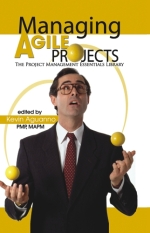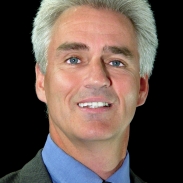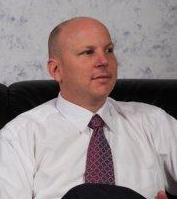 Project Managers unite. If you’re a PM, you found one of the world’s leading experts on Project Management in today’s interview. Kevin J.J. Aguanno is a certified PMP through the Project Management Institute, and has influenced they way work gets done at international companies such as IBM.
Project Managers unite. If you’re a PM, you found one of the world’s leading experts on Project Management in today’s interview. Kevin J.J. Aguanno is a certified PMP through the Project Management Institute, and has influenced they way work gets done at international companies such as IBM.
He’s a best selling author and project management guru of gurus. If you’ve never heard of “agile project management,” you’ll learn about it here. And for the global business MBAs out there, he offers a mini-lesson on Canadian culture and business.
LISA: How can we cut through red tape when our project approvals and processes feel buried in bureaucracy?
KEVIN: I get called in to do a lot of troubled project consulting. In doing so, I get to meet a lot of senior executives who are burdened with these failing initiatives.
Once I assess what is wrong, I make some recommendations for turning the project around that usually require significant deviations from the processes the organization was already using. Clearly, when “the way we do things around here” is not working, doing more if it will not help the situation. I point out how some of the existing processes have contributed to the troubles in the project, as not every process step is relevant to every project. I make a convincing case for why specific processes need to be modified in order for the project to succeed. Almost without exception, all of my recommendations are adopted.
What is most interesting about this is that many executives comment that, once I explained why the standard processes were not adding value to this specific project, it was a “no-brainer” to grant a process exemption or bypass. Many say that they know that their organization’s procedures can seem bureaucratic and that they shouldn’t apply in all situations, but that no one has ever come to them before asking for an exemption. These executives confirm that having a solid explanation is the key to getting a bypass approved.
Try to understand the reasons why a process was created in the first place, and why it is set up the way it is today. With this understanding, you can present a case showing that the issue does not apply in your case (and therefore you don’t need that process step) or that you have dealt with the same underlying concerns in a more efficient way.
Don’t just go off and break the rules – that is a sure way to get in deep trouble. Rather, present a reasoned, compelling case and you’ll be surprised at people’s willingness to bend the rules.
LISA: If you’re pulling all-nighters trying to bring project success, how can you get a better handle on personal and project effectiveness?
KEVIN: While there may be some occasional times where we have to work evenings or weekends, this should never become a habit. It is comical how many times I see project schedules built that plan to have people working 12 or 14 hour days – I’m talking about the original schedules. Often, these plans are put in place to deal with tight project delivery dates.
What is so wrong about this, is that if you schedule overtime from the start, what do you have as a fallback position if things go wrong? You should always build plans with people working normal 7-10 hour days (whatever is normal for your industry). Then, when things inevitably go wrong later on in the project, you have overtime as a fallback position to help you get back on track.
You see, when people are burning the midnight oil for days (or weeks!) on end, they become mentally and physically fatigued, resulting in people who are less effective, working more slowly, creating more errors, and not thinking clearly. It is a false assumption that working people longer and harder for days on end will result in a quicker delivery of value. Yes, their volume of work may go up, but the quality and usefulness of the work may greatly suffer.
If you find yourself in such a situation, stop. Take a deep breath, and look around you – objectively. See if your team is making meaningful progress under the circumstances. You may find that your extra efforts are not really improving the delivery schedule anyways, and adding additional resources or building a realistic schedule would be more helpful.
LISA: What are some ways to reduce scope creep without coming across as Dr. No?
KEVIN: Strangely enough, one of the best ways to manage scope creep is to stop fighting the changes. The concept of “change control” is a myth – we cannot control change. Business priorities shift as new directions come down from top executives, competitors beat us to market, government legislation changes, or new technology fails to deliver on its promises. There are countless reasons for change to occur on a project, and nearly all of these are outside of the control of the sponsor or the project manager.
By embracing change, the project sponsor and the project manager can enter into a collaborative discussion about how to adapt to the most important changes, while still meeting project goals. To do this, we need to understand the business case drivers. Perhaps cost isn’t the issue, but timing is; in this case, we would add additional resources to deliver the needed change without impacting time lines. If both cost and timing are constraints, then the sponsor and project manager enter into a discussion about the prioritization of work, dropping something less important to make room for the required change.
What I am talking about here is developing a more open, collaborative relationship between the business sponsor and the project manager. With a mutual understanding of the business case behind the project, together they can maintain a viable delivery plan, even in the face of change. Strategies are further detailed in my audio book Managing in the Face of Ever-Changing Requirements.
LISA: How can we improve ROI on high-change or high-risk projects that we’re leading?
KEVIN: Currently, one of the best practices for high-change projects – ones where scope creep is at risk of derailing the project – is to use agile management methods.
In agile methods, projects are broken down into many short phases (called “iterations”) most commonly lasting 2-4 weeks long. Each iteration is treated like its own tiny project, with a fixed scope and time line for that individual iteration. Changes are welcomed throughout the project and get immediately added to a “backlog” of project requirements/features. Then, at the start of the next iteration, the backlog is re-sorted to reflect the current business priorities and the top few items are selected as the scope for the upcoming iteration.
The total possible scope (as reflected in the backlog) can expand continually, but through the reprioritization process, only the most important items get built in any given iteration, ensuring that the project is focused on delivering maximum business value. A short, simple work authorization or change authorization form lists the items to be completed in the upcoming iteration; this acts as the audit trail for the formal change management process.
At the end of any iteration, the project sponsor can stop the project because it is (a) out of time, (b) out of money, (c) been canceled, or (d) has delivered “good enough” value. Good enough value means that the maximum ROI has been achieved – all of the must-have items have been completed, and a critical mass of the should-have items, leaving only low-priority ones left. Expending further investment at this point would be an inefficient use of capital.
A good deal of my best-selling book “Managing Agile Projects” deals with this very issue. The book explains agile management from a business perspective, explaining the risks, benefits, and trade-offs entailed when adopting agile methods.
LISA: Our group loves global business, and you’re based in Canada. Teach us something unique or interesting about doing business there.
KEVIN: One of the interesting things about Canada is its incredible cultural diversity. The country started as a merging of English, French, and aboriginal peoples, in a uniquely Canadian way that encourages them all to maintain their native languages and cultures. Since its inception, Canada has welcomed vast numbers of immigrants from all corners of the world. With our celebration of our multicultural roots, we have encouraged newcomers to maintain their linguistic, cultural, and religious heritages while embracing the Canadian values of tolerance and respect for differences in others.
In our largest cities, you can find people from all over the world. In Toronto alone, there are over 170 languages spoken on the streets, with businesses and government offering services in many of these languages. Visitors to Canada feel that they are in a safe environment, no matter where they are from, and are free to be themselves.
This pervasive focus on diversity has strengthened Canadian businesses as they have access to new perspectives and employees with experience working around the world. Americans find that they are comfortable dealing with Canadians as our closest trading partner, yet they also notice that many of our cities also have a European feel. Canadian exporters take advantage of our diversity to open new markets internationally.
—
If you want to learn more from Kevin, subscribe to the free AgilePM Newsletter. This email newsletter comes out once per month and is filled with tips, articles, book reviews, and notices of free teleseminars, as well as some huge discounts on agile-themed books and courses available only to AgilePM Newsletter readers.
 Today’s economic situation is serving up record unemployment rates, continued job losses, and lots of fear. Hurricanes, school shootings, and terrorism fills the news. A friend of mine recently laid off 3/4 of his team, and he’s trying to inspire the survivors who feel like soon-to-be-victims. Leadership in times of crisis is hard.
Today’s economic situation is serving up record unemployment rates, continued job losses, and lots of fear. Hurricanes, school shootings, and terrorism fills the news. A friend of mine recently laid off 3/4 of his team, and he’s trying to inspire the survivors who feel like soon-to-be-victims. Leadership in times of crisis is hard.






